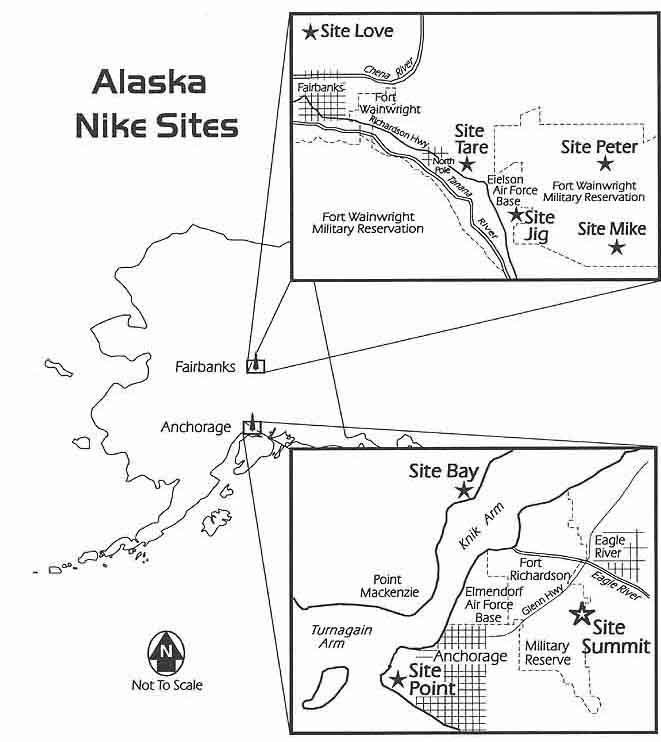Nike Missile Anchorage Defense Area
In August 1955, the United States Army, Alaska (USARAL) announced plans to build Nike missile installations in the vicinities of Fairbanks and Anchorage to replace the gun emplacements then defending those regions. The Corps of Engineers Alaska District surveyed potential sites, acquired the needed land, and in March 1957, issued invitations to bid on the project. Patti-McDonald and M.B. Contracting Company earned the contract. This primary contracting team would eventually receive about $10 million for its work. With other contractors installing support facilities, the cost per site approached $5 million, nearly five times the average cost of sites built in the lower 48 states.
Three sites were located around Anchorage to defend the city, Fort Richardson, and Elmendorf AFB. The Army activated Site Bay, located 20 miles northwest of Anchorage, in March 1959. Site Point, located 10 miles southwest of Anchorage, was activated a month later. Situated at Fort Richardson near Anchorage, the Command Post hosted the regional air defense command and control facility.
The most challenging part of the construction project was placing a missile battery at Site Summit located on Mount Gordon Lyon. To install the launcher and control radars, a tremendous amount of blasting had to be completed to provide for access roads and level sites. Fog, high winds, and winter snows slowed work at Summit Site, delaying activation until May 1959.
Unique design features to accommodate the climate included above-ground magazines and heated radar towers. The design of the magazines represented a radical departure from those built in the lower 48 states. A typical battery featured two concrete box-shaped structures with exterior concrete aprons. Two doors opened facing the apron to allow missiles to roll on carriages to the launching rails. Before installation, a prototype of this system was constructed and tested at White Sands Missile Range. Also unlike previously constructed sites, weather conditions dictated that housing be located at the battery control. Berthing, dining, post exchange, barber shop, dispensary, and tactical radar facilities were all located under one roof within the "battery control building."
Living at these sites were men of the 4th Missile Battalion, 43rd Artillery (redesignated 1st Missile Battalion, 43rd Artillery in 1972). This Regular Army unit endured some incredibly harsh conditions. The coldest night occurred in February 1969 when the temperature dipped down to -45 F. Not only did these batteries face harsh weather, they endured the great earthquake of March 27, 1964. One of the batteries of Site Point was damaged beyond repair.
With the exception of the earthquake-damaged battery at Site Point, these batteries remained on duty until 1979.
